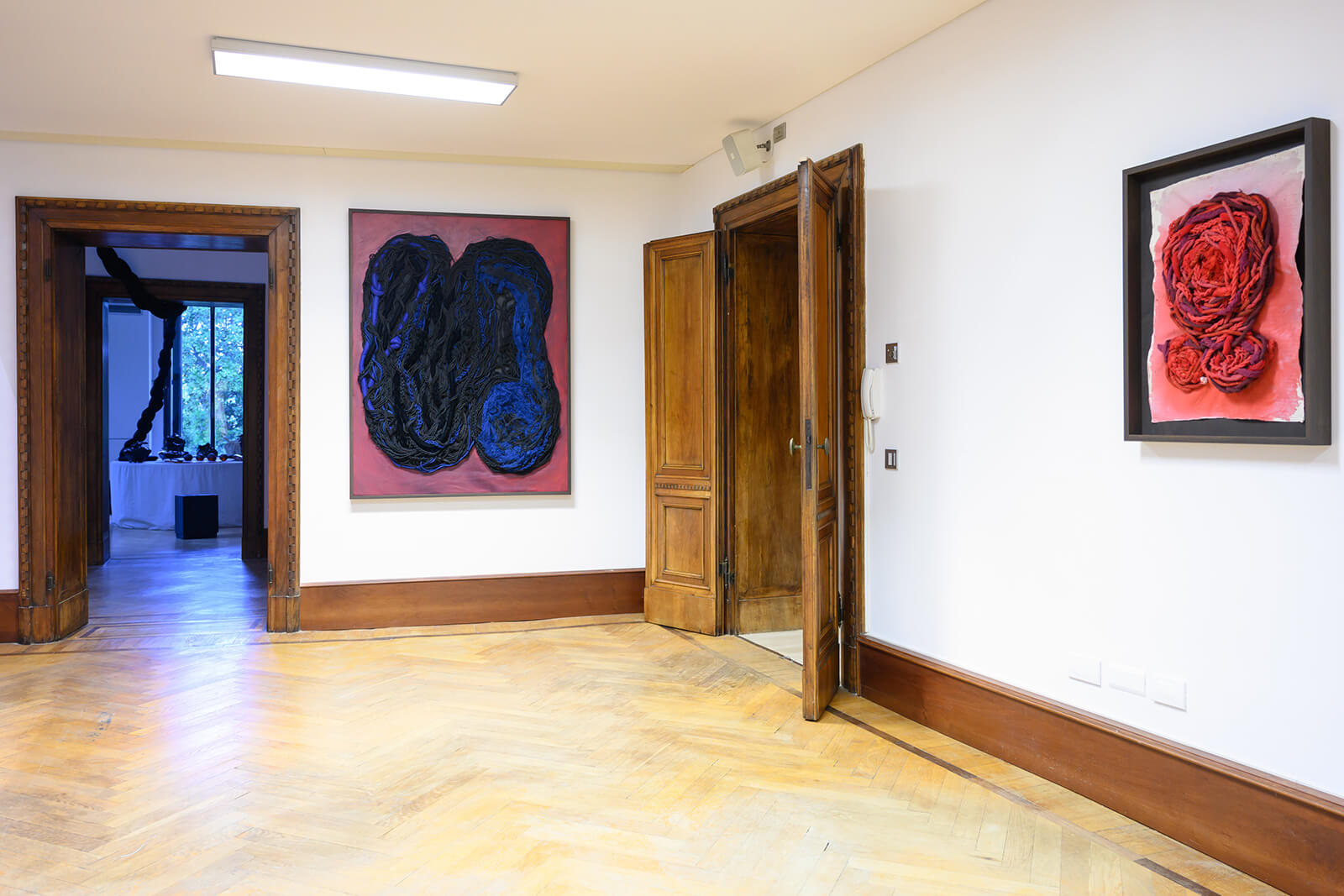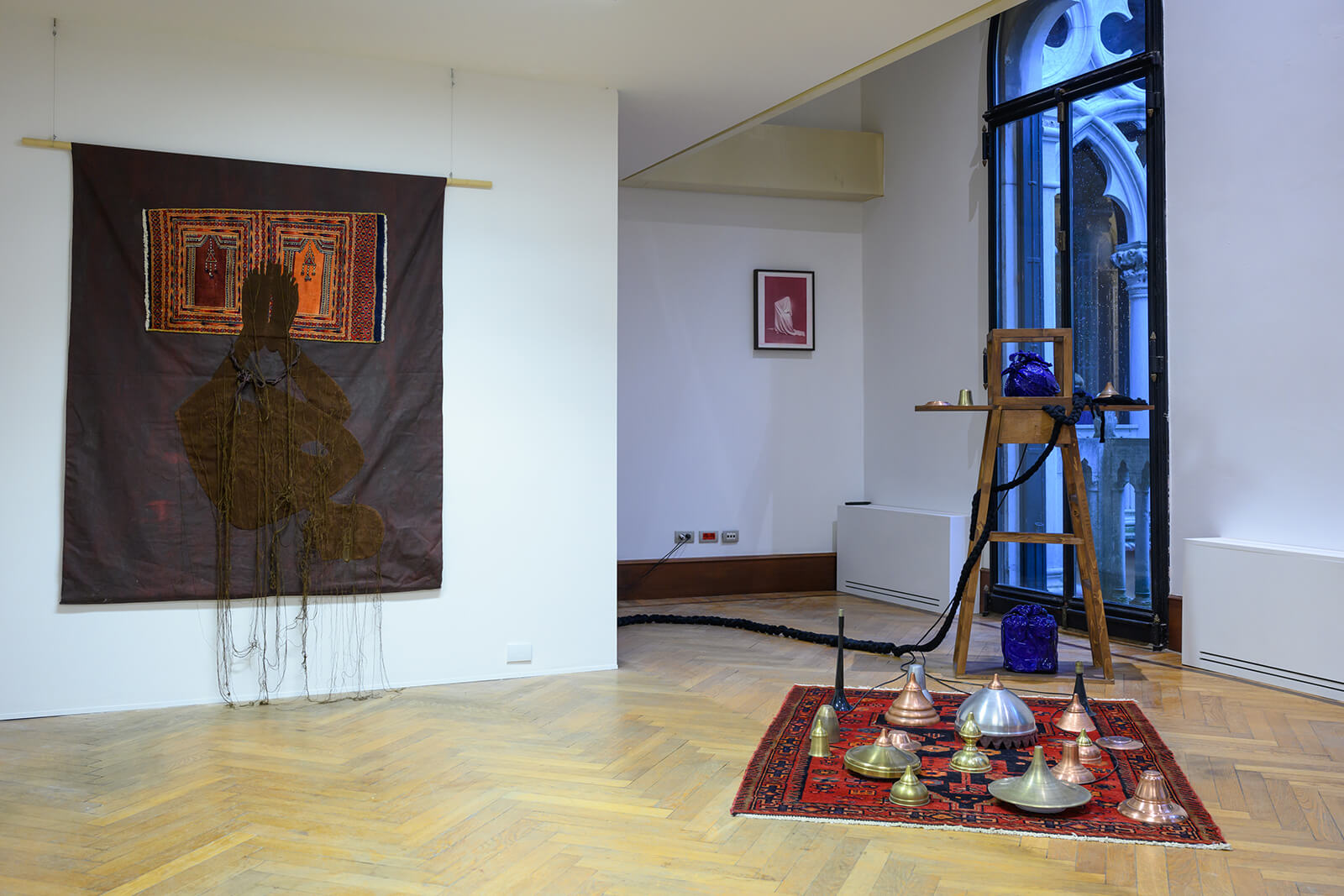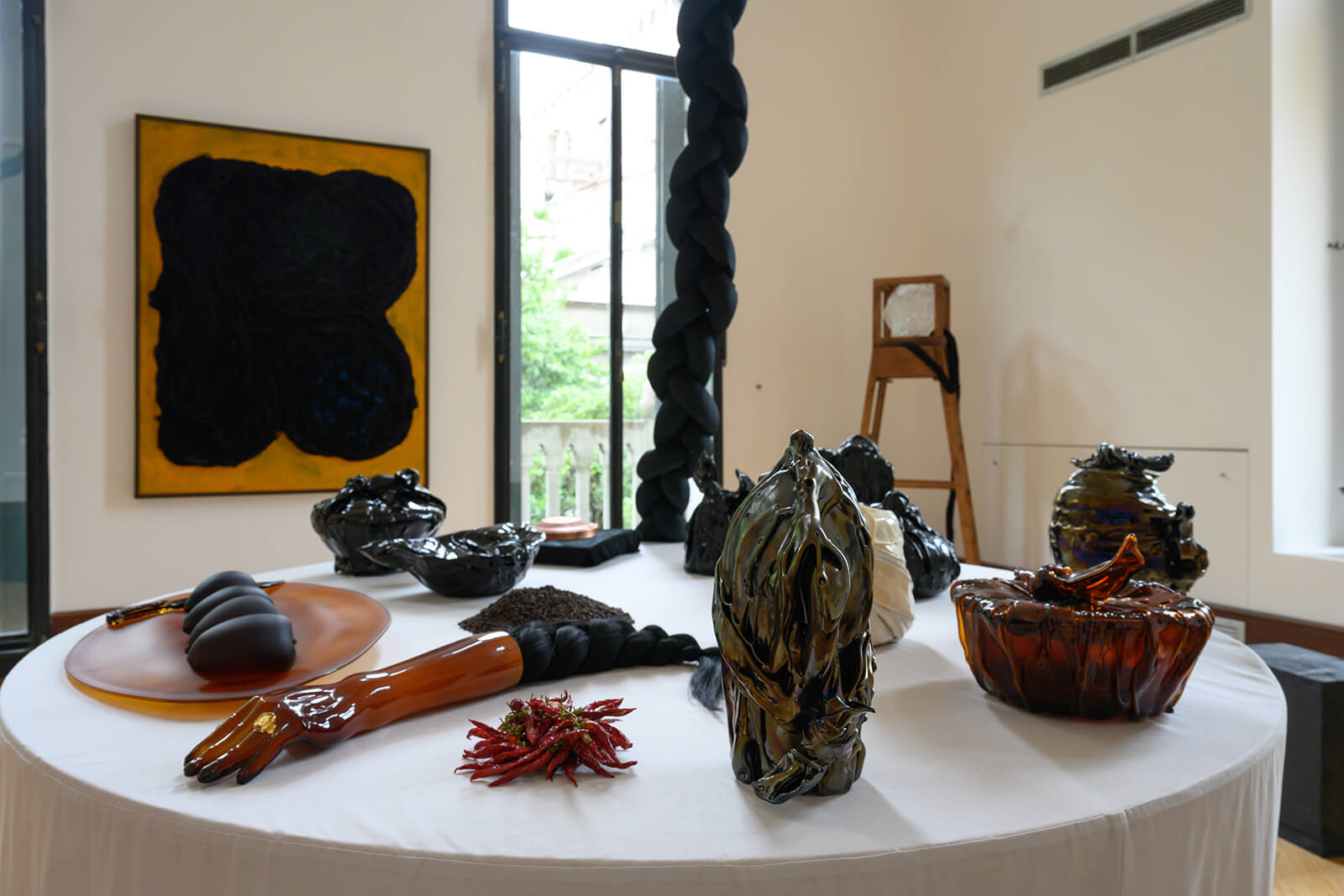When time dissolves through marble: 'Closer Than Before' by Alex Hartley
by Eleonora GhediniJun 06, 2023
•make your fridays matter with a well-read weekend
by Zahra KhanPublished on : Jun 24, 2024
Interdisciplinary artist Osman Yousefzada is continuing to make his mark. His solo site specific exhibition, Welcome! A Palazzo for Immigrants, presented by Fondazione Berengo and curated by Nadja Romain and Amin Jaffer, opened at Palazzo Franchetti in Venice in April 2024. A month later, in May 2024, he opened Where it Began, a solo exhibition at Cartwright Hall in Bradford which brings together new commissions with work from his 2022 Victoria and Albert Museum exhibition, What is Seen & What is Not.
Yousefzada’s exhibitions are bold, multi-disciplinary and multi-sensory. His vivid work is relevant to contemporary conversations regarding migration and the immigrant’s journey. Wrapped objects rendered in glass, fibre-based wall sculptures and brushed metal pots are vehicles for exploring the complicated relationships immigrants can have with the notion of belonging and the worth of the material possessions, cultural nuances and mythological and colonial histories they carry with them.
As the child of immigrants from Pakistan, Yousefzada’s art takes inspiration from the lives of his parents, and especially that of his mother, who was a seamstress. His embroidered hangings which take the form of woven textile wall sculptures, often depicting figure-like talismans, are a testament to his mother. Potlis or wrapped packages fabricated in fragile glass are based on bundles of wrapped objects he remembers his mother transporting and diligently maintaining. These artworks proudly present the complex experience of the “other” and are linked to the PhD Yousefzada is currently pursuing, titled “Understanding the role of objects and rituals in marginalised migrant spaces”, accessing what are often closed off South Asian migrant communities through artistic engagement.

Through his work, the artist highlights the shared habits of migrants, particularly female migrants, and the rituals they repeat at home based on inherited cultural norms. “Home is the most important place where you dream from,” Yousefzada says, “...migrants live their lives nimbly, perhaps never feeling that they truly belong or are home.” They keep their clothes in suitcases, ready to pick up and leave. These practices and memories are sometimes the only connection immigrants still have to their homelands. Certain customs and myths can gain importance over time, as migrants build their homes in their adopted foreign lands.
Home is the most important place where you dream from – Osman Yousefzada
Welcome! A Palazzo for Immigrants is a reflection of Yousefzada’s multidisciplinary material practice and his core artistic interests. Film, sound pieces, paintings, sculptures, and installations support his representation of the immigrant experience – disconnected rituals, habits and snatches of myths become of paramount importance and are woven together to form narratives. Yousefzada explains, “Silent videos of men and women reciting protective prayers and blowing over the viewer lead the way to the exhibition, almost like an immigrant blessing.” The exhibition highlights objects that are traditionally thought of as “humble” – that are of value to the immigrant. In one installation, brushed steel pots of varying quality wrapped in cling film are placed on a traditional rug. These pots are everyday pots used for cooking that are very dear to the immigrant and are kept carefully and safely. The food and spices that are mixed within them form a connection to home.
A sense of the supernatural and invisible protective forces, another aspect of the migrant condition, is folded into the exhibition. Woven fibre wall sculptures in the shapes of otherworldly figures or jinns with long braids hang on the walls. Yousefzada thus explores the beliefs migrants hold onto. In South Asia, jinns are thought of as the other, invisible beings living alongside humans in this world but in a different dimension. Jinns can be good or evil and possess supernatural qualities. “Jinns are a form of the other. They have massive power,” says Yousefzada, as he compares the migrant and the jinn. Yousefzada explains "Jinns are unseen like the immigrant, and something that we are scared of - the unknown, much like the immigrant."
The artist invites other marginalised and forgotten voices into the space through two sound pieces. One pays homage to the workers who built the palazzo that the exhibition is housed in. The other is a gentle hum created by the spinning vessels placed on the carpet. “It sounds like a lori (a lullaby) which takes you to a safe space, that hum reminds you of your origin. A maternal hum of where you come from,” he says. The conversation between the two sound pieces connects the different installations, themes and objects of the show.

Also linking the rooms of the show, and further highlighting the complex experience of the female immigrant, are two massive woven braids in velvet which hang from the ceiling and span across two rooms – twisting and turning and eventually sitting in bird-like glass talons. “Open hair is the venus rising, the wanton woman, who can’t be controlled,” says Yousefzada, as he explains how hair is used as a means of controlling women – wild, open hair has negative connotations, while neatly braided hair is the demure controlled woman. In Yousefzada’s exhibition, “the controlled hair grows talons to show her power. So there is still a sense of resistance and defiance.”

The exhibition evokes a milieu of sights and sounds coming together to create the immigrant’s circumstances at home. A large dining table laid out with objects is one the most striking sights in the show. A table of plenty, laid with inedible fossilised glass sculptures. There are bunches of chillies to ward away evil spirits or the black eye. Glass mangoes and black peppercorns are represented in reference to the old spice trade from South Asia.
Yousefzada’s practice is timely and important; it considers the immigrant’s journey through the lenses of material culture, ritualistic traditions and the concept of home. The exhibition celebrates the unique customs immigrants travel with and bring into their newly adopted homelands. While celebrating how the wealth of their experiences contributes to the fabric of society, the exhibition also questions when the immigrant will feel safe and secure. When will they feel they can unwrap their possessions and join the table of plenty?
by Shaunak Mahbubani Oct 13, 2025
Collective practices and live acts shine in across, with, nearby convened by Ravi Agarwal, Adania Shibli and Bergen School of Architecture.
by Srishti Ojha Oct 10, 2025
Directed by Shashanka ‘Bob’ Chaturvedi with creative direction by Swati Bhattacharya, the short film models intergenerational conversations on sexuality, contraception and consent.
by Asian Paints Oct 08, 2025
Forty Kolkata taxis became travelling archives as Asian Paints celebrates four decades of Sharad Shamman through colour, craft and cultural memory.
by Srishti Ojha Oct 08, 2025
The 11th edition of the international art fair celebrates the multiplicity and richness of the Asian art landscape.
 surprise me!
surprise me!
make your fridays matter
SUBSCRIBEEnter your details to sign in
Don’t have an account?
Sign upOr you can sign in with
a single account for all
STIR platforms
All your bookmarks will be available across all your devices.
Stay STIRred
Already have an account?
Sign inOr you can sign up with
Tap on things that interests you.
Select the Conversation Category you would like to watch
Please enter your details and click submit.
Enter the 6-digit code sent at
Verification link sent to check your inbox or spam folder to complete sign up process



by Zahra Khan | Published on : Jun 24, 2024
What do you think?